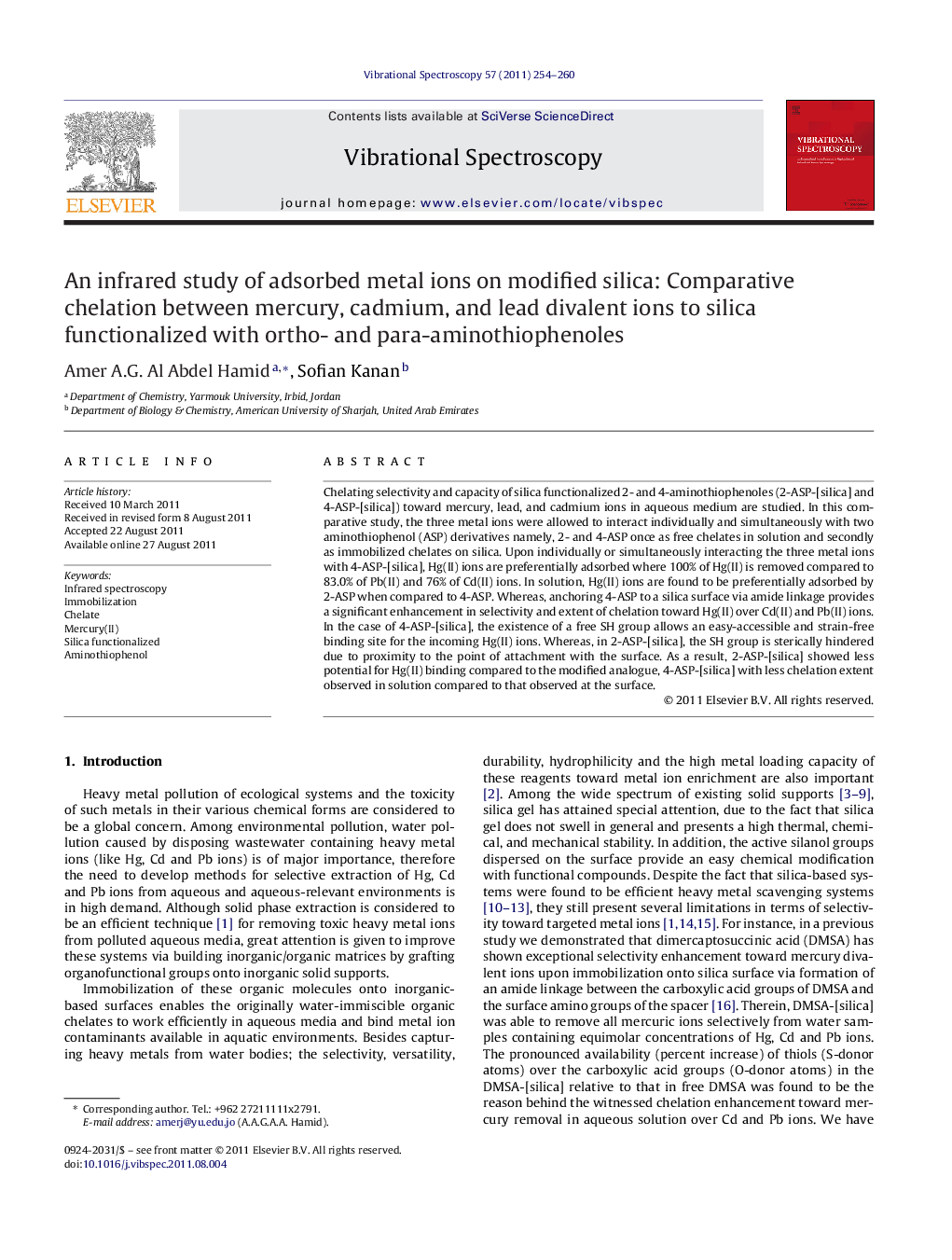| Article ID | Journal | Published Year | Pages | File Type |
|---|---|---|---|---|
| 1250547 | Vibrational Spectroscopy | 2011 | 7 Pages |
Chelating selectivity and capacity of silica functionalized 2- and 4-aminothiophenoles (2-ASP-[silica] and 4-ASP-[silica]) toward mercury, lead, and cadmium ions in aqueous medium are studied. In this comparative study, the three metal ions were allowed to interact individually and simultaneously with two aminothiophenol (ASP) derivatives namely, 2- and 4-ASP once as free chelates in solution and secondly as immobilized chelates on silica. Upon individually or simultaneously interacting the three metal ions with 4-ASP-[silica], Hg(II) ions are preferentially adsorbed where 100% of Hg(II) is removed compared to 83.0% of Pb(II) and 76% of Cd(II) ions. In solution, Hg(II) ions are found to be preferentially adsorbed by 2-ASP when compared to 4-ASP. Whereas, anchoring 4-ASP to a silica surface via amide linkage provides a significant enhancement in selectivity and extent of chelation toward Hg(II) over Cd(II) and Pb(II) ions. In the case of 4-ASP-[silica], the existence of a free SH group allows an easy-accessible and strain-free binding site for the incoming Hg(II) ions. Whereas, in 2-ASP-[silica], the SH group is sterically hindered due to proximity to the point of attachment with the surface. As a result, 2-ASP-[silica] showed less potential for Hg(II) binding compared to the modified analogue, 4-ASP-[silica] with less chelation extent observed in solution compared to that observed at the surface.
► Binding effectiveness of 2-, 4-ASP-silica is explored by interacting with aq- solutions of Hg, Cd and Pb ions. ► Attaching 2-, 4-ASP to silica altered their binding for Hg, Cd and Pb ions. ► 4-ASP-silica preferentially binds HgII over Cd and Pb ions upon individual and simultaneous interaction. ► In solution, Hg(II) is preferentially adsorbed by 2-ASP rather than 4-ASP. ► Anchoring 4-ASP to silica significantly enhanced its chelation selectivity for Hg over Cd and Pb ions.
